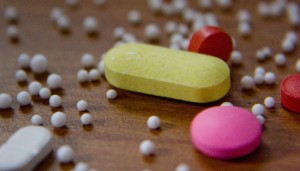Last week, the International Societies of Exposure Science and Indoor Air Quality had their joint meeting in Kaunas, Lithuania. The meeting featured a lot of great research on topics ranging from the thermal comfort of clothes to exposure to heavy metals from e-cigarettes and everything in between. While we can’t summarize the whole meeting here, …
By Pudelek (Marcin Szala) – Own work, CC BY-SA 3.0, Link The International Societies for Exposure Science and Indoor Air Quality are having a joint meeting August 18-22, 2019 in Kaunas, Lithuania. Grantees from both the Microbiology of the Built Environment and Chemistry of Indoor Environments programs will feature in several sessions. In addition, there …
Spore-forming bacteria survive on surfaces coated with antimicrobial, latex paints Antimicrobial paints kill most bacteria within 24 hours, but some survive Such products are typically tested on pathogens but not common bacteria like Bacillus Antimicrobial paints could favor antibiotic resistance — making harmless bacteria like Bacillus harmful EVANSTON, Ill. — Antimicrobial paints offer the promise of …
The Sloan Foundation gave me one more thing to be grateful for this Thanksgiving: a grant to evaluate the impacts of different surface finishes on the indoor microbiome. My previous work identified a relationship between antimicrobial chemicals and antibiotic resistance genes in dust. This new project will build upon these results using an experimental system to …
Jumping on the blame train, my colleagues and I have found yet another reason to avoid antibacterial products. Our study, which identified a correlation between certain antibiotic resistance genes and the much maligned triclosan in indoor dust, was published in Environmental Science & Technology last week. As of today, the full text version is freely …

